Why ‘Exponential Growth’ Is So Scary For The COVID-19 Coronavirus

And why social distancing, isolation, and sheltering-in-place are so effective, but only if we do them early enough.
In any biological system, if you put a living organism into an environment where it can thrive, with unlimited resources and no predators or competitors, it will always grow in the same fashion: exponentially. As long as those conditions are met, everything from wolves to parasitic wasps to yeast cells will grow exponentially, up until one of those assumptions fails to be true. Only at that point will growth become slower, and that holds the key to understanding how to mitigate the present pandemic.
In the case of the coronavirus COVID-19, exponential growth will occur in the disease rate in humans so long as:
- there is at least one infected person in the population pool,
- regular contact between infected and uninfected members of the population occurs,
- and there are large numbers of uninfected potential hosts among the population.
Here’s why that’s so deadly.
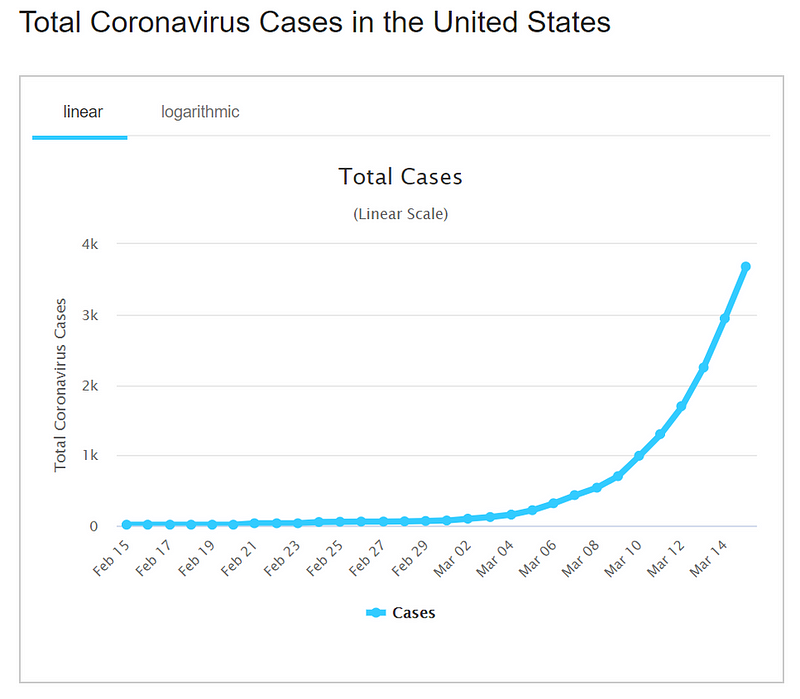
Whenever you have exponential growth, whatever it is that’s growing will double its presence/population in a given amount of time. Let’s say you start with a population that has just one infected person on January 1st, and the number of infected people doubles every three days.
How many people will be infected by January 31? How many people will be infected by this year’s equinox: March 19?
If the exponential nature of the infection transmission isn’t stemmed in any way, there will be 1024 infected people on January 31: about a thousand times as many as you began with. That’s a lot, but remember that this continues to double every three days as long as this growth remains exponential. On February 3, there will be twice as many: 2048 infected. On February 6, that rises to 4096. By the time you get to March 19, which is 78 days after the initial infection, some 67 million people will be infected.
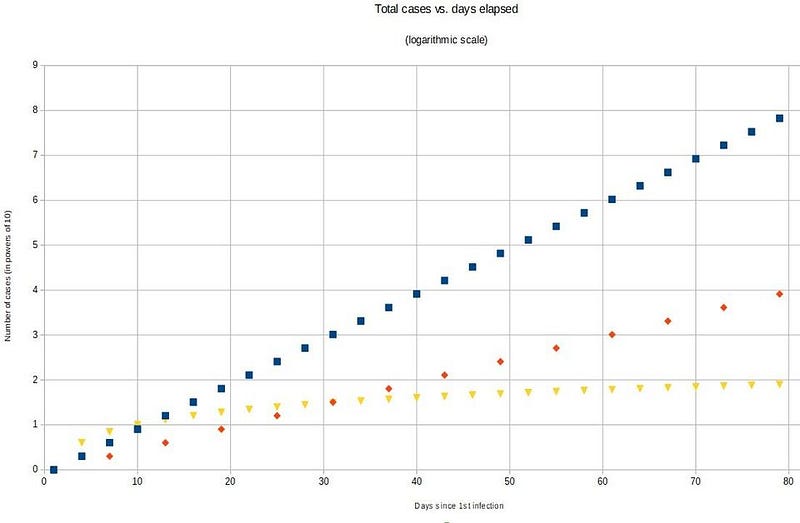
This is very different from how the human mind normally perceives of growth: in linear (or arithemetic) fashion. Think about these two sequences of numbers, one of which shows linear growth and one of which shows exponential growth.
- 2, 4, 6, 8, 10, 12, 14, 16, 18, 20, etc.
- 2, 4, 8, 16, 32, 64, 128, 256, 512, 1024, etc.
In both cases, the numbers start out small and remain small (but growing) for a time. But very quickly, the differences between the top sequence (which is the linear growth we typically think of) and the bottom sequence (which is the exponential growth we’re encountering now) become apparent. Exponential growth is so powerful not because it’s necessarily fast, but because it’s relentless. Without introducing a factor to suppress it, exponential growth is an infectious disease doctor’s nightmare, particularly as more time goes on.
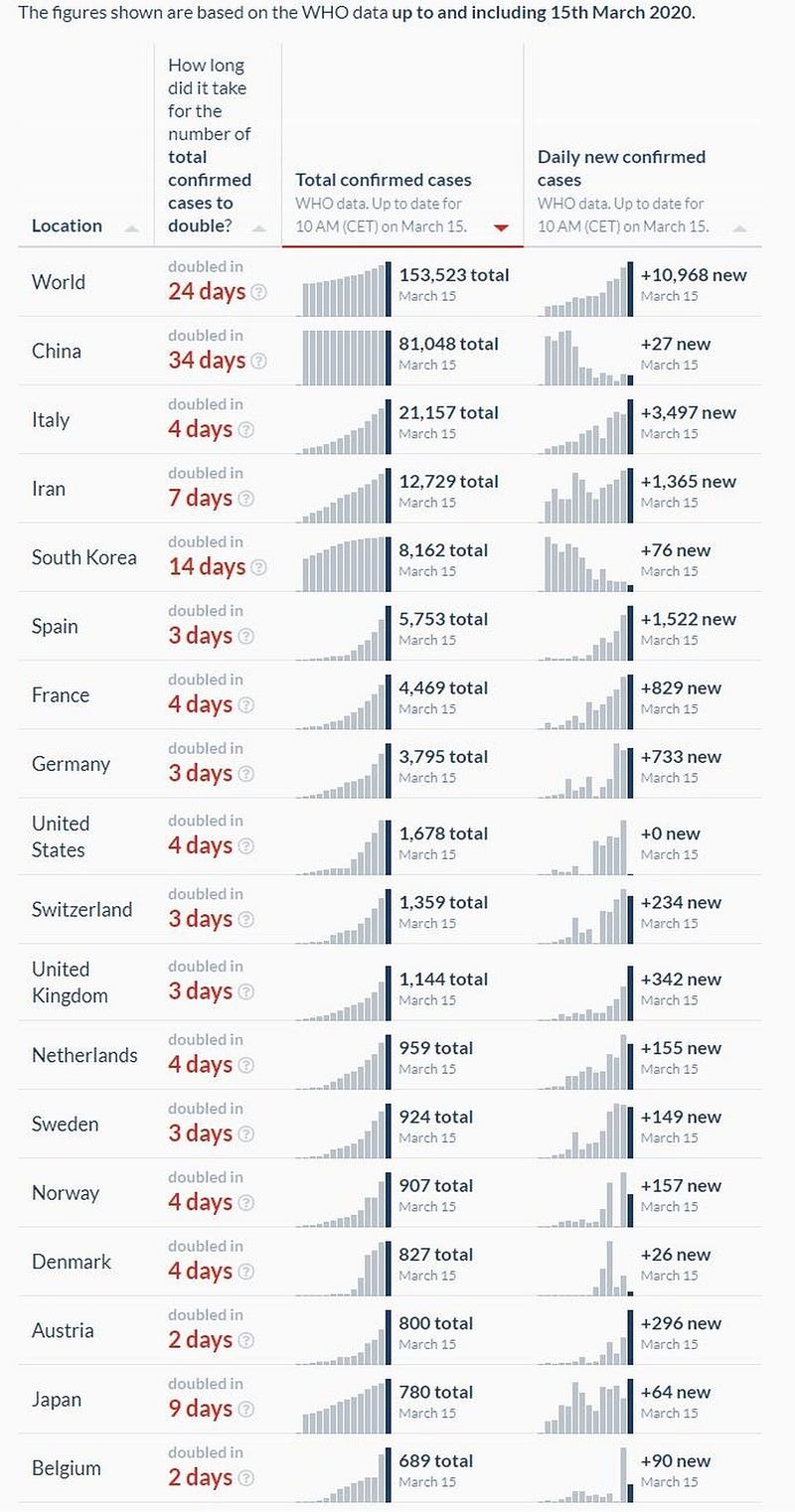
Thankfully, there’s virtually no chance of the world reaching 67 million infections in March of 2020. This alarming thought of exponential growth infecting an enormous number of people in such a short time is not our likely fate with the COVID-19 coronavirus, for a few reasons.
For starters, despite the fact that the numbers of confirmed COVID-19 cases appears to be exponentially rising in the United States with a doubling time of 2.4 days, larger and longer-period studies have shown that the true doubling time is closer to 6 days, indicating that the United States data is skewed by insufficient testing. The majority of people who are infected most likely have not been tested, are not showing symptoms, and have been newly infected. That’s a blessing and a curse of growth in the exponential phase: the majority of infections that are going around in the population right now have occurred in the most recent “doubling period” of exponential growth.
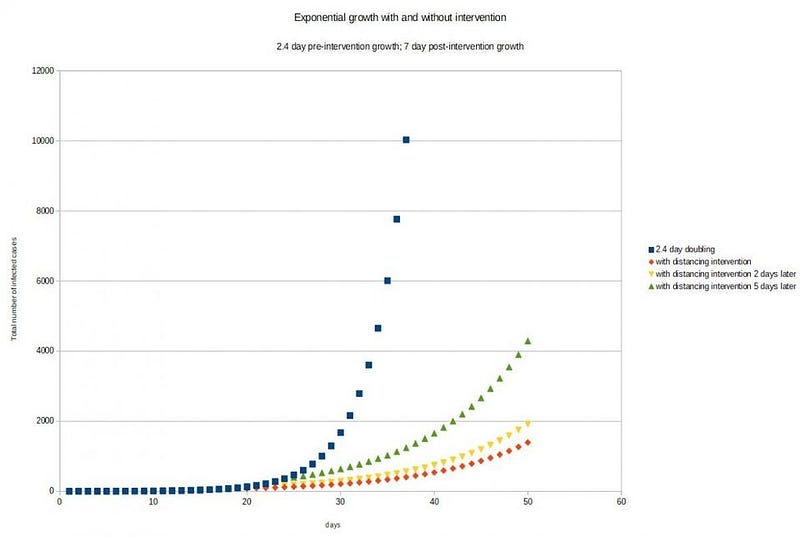
In addition, the “exponential growth” part can be stemmed, suppressed, or stopped entirely through a number of actions that we have the ability to take, both as individuals and as a collective society. There are a number of actions we can take, and they will have different effects and impacts on how rapidly and extensively this disease will spread.
If we practice social distancing, for instance, where we avoid large gatherings and keep a significant distance between ourselves and others’ bodies, we can reduce the transmission rate. Interventions such as this can effectively increase the “doubling time” of the disease significantly, slowing the rate of infection in the uninfected population. The more successful an intervention such as this is, the more spread out in time the infection will be among the public: what infectious disease specialists are calling “flattening the curve,” which prevents everyone from getting sick at once. This didn’t happen in countries like Italy and Iran during a critical period, and explains why both infection rates and death rates are so high in those countries.
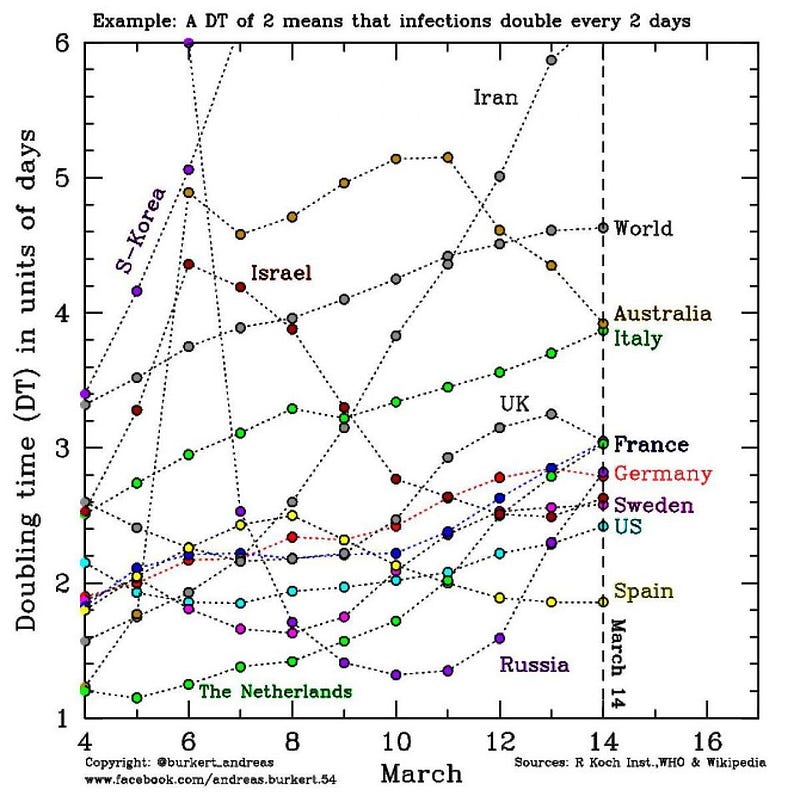
This also showcases why taking action early — long before the number of infections is unmanageably large — is so vitally important from a public health perspective. For the COVID-19 coronavirus, there are four periods associated with the disease:
- Infected, but not contagious and not symptomatic.
- Infected and contagious, but not symptomatic.
- Infected, contagious, and symptomatic.
- Recovering (assuming survival), where you may still have symptoms but are no longer contagious.
Without a widespread test available to us all, particularly to those of us who live in communities, cities, or counties where COVID-19 is known to be present, we cannot know who’s infected and who isn’t. Someone who has COVID-19 and is contagious looks just like someone who’s uninfected, and even one contagious person can infect a great many others. The majority of people with a COVID-19 infection, particularly during the exponential growth phase (which we are presently experiencing in the United States), don’t know they have it, and don’t know they can infect others.
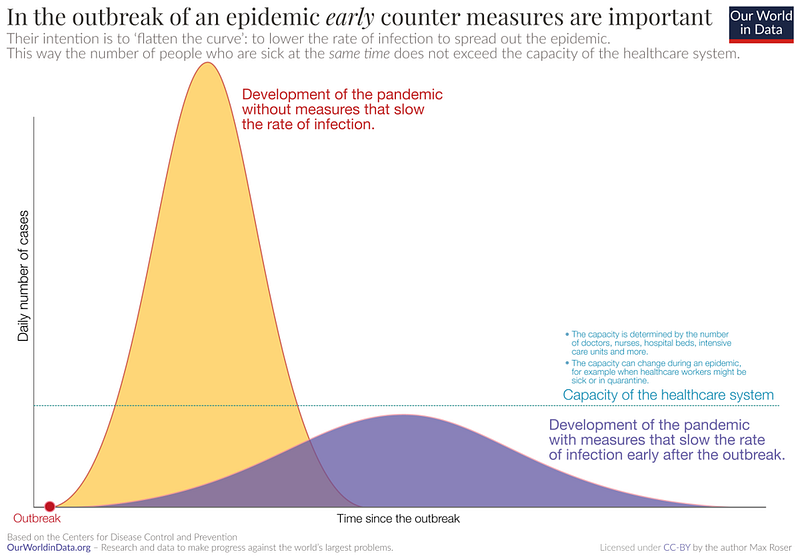
But even with an ignorance of who’s infectious, who’s contagious, and how widespread the infection actually is, there are still two major actions we can take to stop the infection from growing exponentially in the population: isolation and sheltering-in-place.
Isolation involves taking someone who either is infected or is likely to be infected (perhaps because they had recent contact with someone who later tested positive) and separating them from the larger population. A successfully isolated person (or household) will not spread their infection to others; if we can successfully isolate 50%, 90%, or 99% of the infected population, then only 50%, 10%, or 1% (respectively) of the infected population can continue to transmit the disease to others.
Sheltering-in-place, while more severe, can keep uninfected people from becoming infected by preventing them from coming into contact with (potentially) infected members population.
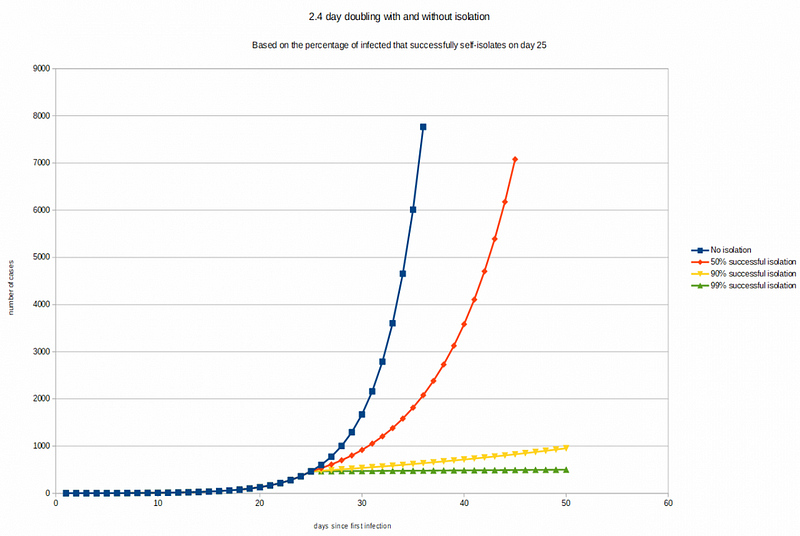
The biggest problem with these strategies isn’t their effectiveness; they’re extremely effective. It isn’t even that we don’t have a reliable, robust, widespread test to know who’s infected and who’s not; even in the absence of a test, social distancing, isolation, and sheltering-in-place can crush the exponential growth phase of an infectious disease.
The problem is that even a small number of people who participate in large gatherings can infect enormous numbers of other people. The good actions of hundreds of infected individuals can all be undone by one infected individual — whether through malice or ignorance — who goes out in public and has close contact with a large number of others. Many public health experts have stated that the disease is now past the point of containment, and estimate that over 100,000,000 individuals will eventually be infected in the United States, with expected fatalities reaching at least hundreds of thousands and potentially many millions.
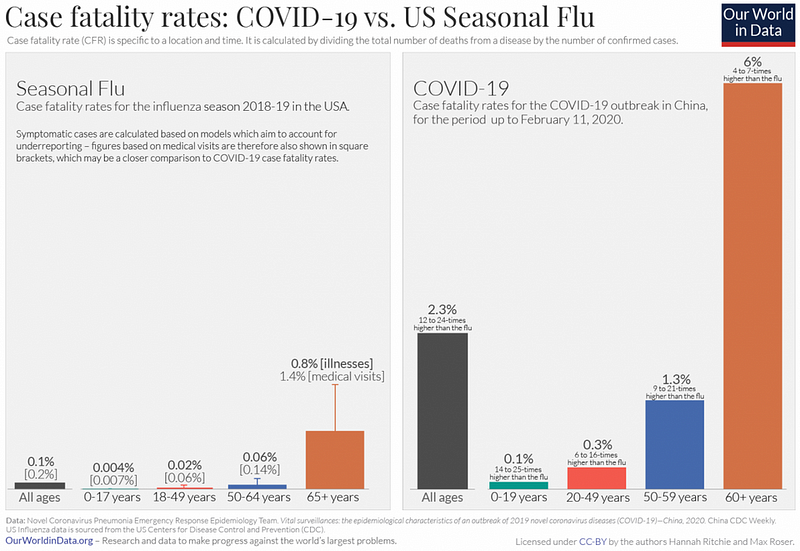
In addition, because we do not know how effective the body’s immune response is in conferring long-term immunity, there is no guarantee that recovering from the disease once will prevent you from getting it a second time. It is not only present in more than 100 countries throughout the world, but in 49 of the USA’s 50 states, with West Virginia the last remaining state to not have yet yielded a single positive test. (That may change at any time.)
However, the population of the United States now has the opportunity to all act together to prevent the exponential phase of the COVID-19 coronavirus from progressing any farther. If we practice social distancing, isolate the infected, and shelter-in-place except for essential trips out to obtain food and medicine/medical care, even for just a few weeks, we can successfully suppress the growth phase of this virus. This will not only “flatten the curve” if we do it successfully, but can potentially decrease the overall death rate by over 75%, similar to the death rate difference between Italy and South Korea. We could literally save millions of lives.
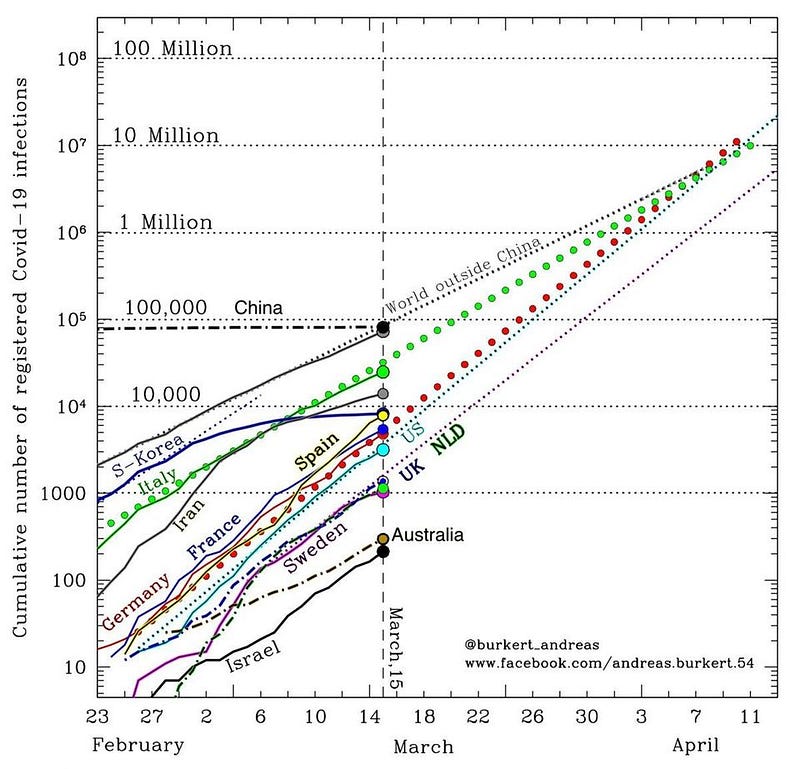
But, for the time being, it appears that the COVID-19 infection is still growing exponentially in many countries across the world, including the United States. The doubling time has been increased to six days or more in South Korea and Iran, but remains between 2 and 4 days in countries like Sweden, France, Italy, Australia, Spain, the Netherlands, and the United States. And most frighteningly, if we continue on our present exponential trends, we will reach a total of over 1 million infected by early April in a large number of countries.
It doesn’t have to be this way, however. If we can dramatically reduce the rate of infection now, at this critical time (over the next 2-to-4 weeks), we could see the number of newly infected individuals drop precipitously, and slow the spread of this pandemic. The key is putting the brakes on the exponential growth phase, and to take these disease-reducing actions seriously. Unless we all take part, however, things will get a lot worse before they get better.
Ethan Siegel is the author of Beyond the Galaxy and Treknology. You can pre-order his third book, currently in development: the Encyclopaedia Cosmologica.





